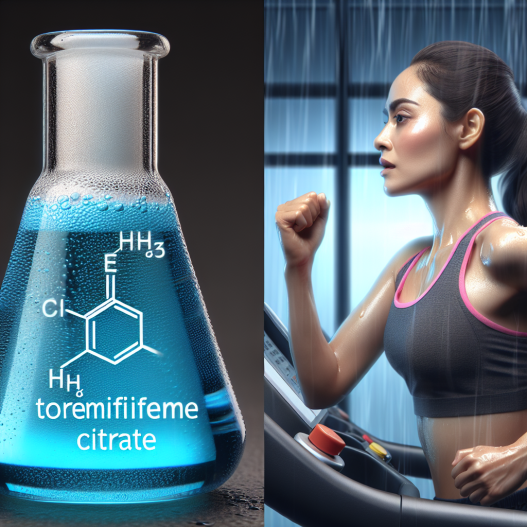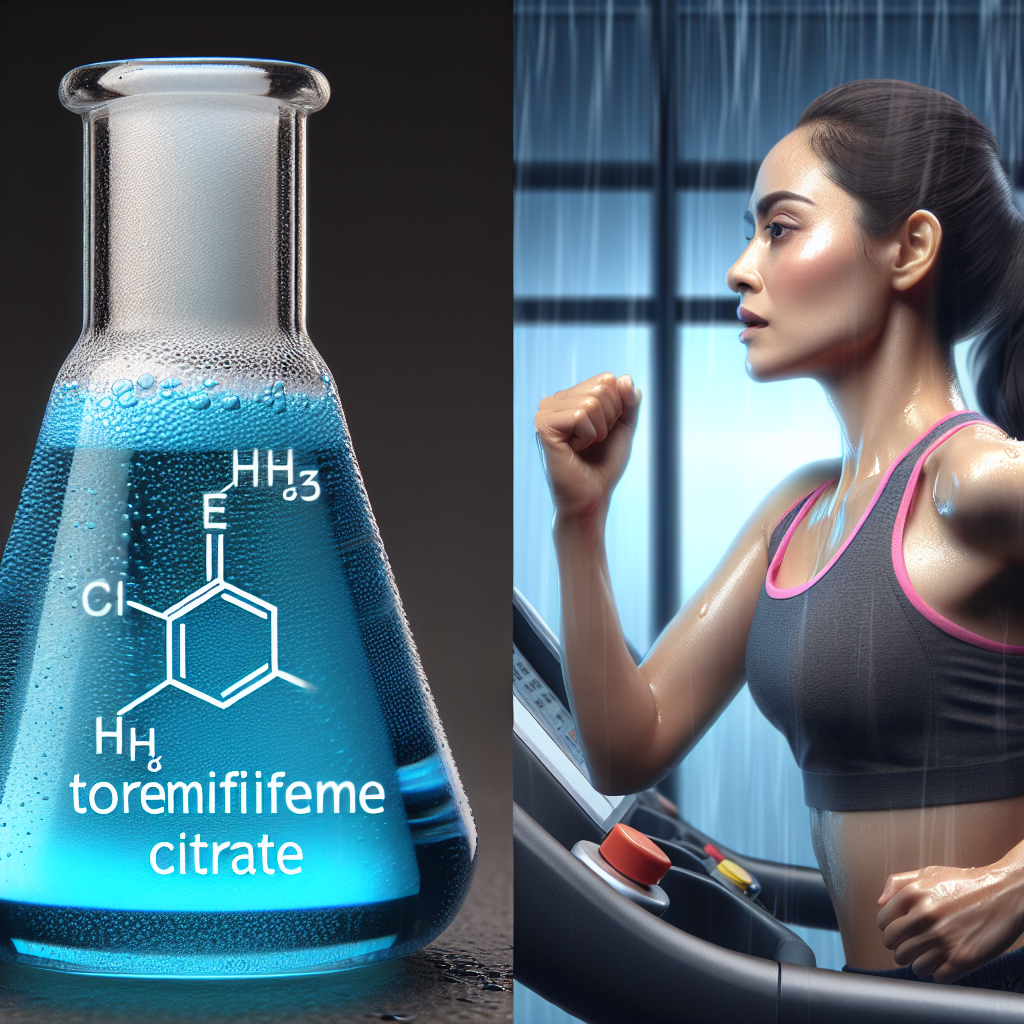-
Table of Contents
Toremifene Citrate’s Impact on Physical Endurance
Physical endurance is a crucial aspect of athletic performance, whether it be in professional sports or recreational activities. Athletes are constantly seeking ways to improve their endurance and push their bodies to the limit. In recent years, there has been a growing interest in the use of performance-enhancing drugs to achieve these goals. One such drug that has gained attention is toremifene citrate, a selective estrogen receptor modulator (SERM) originally developed for the treatment of breast cancer. However, its potential impact on physical endurance has sparked interest in the sports community. In this article, we will explore the pharmacokinetics and pharmacodynamics of toremifene citrate and its potential impact on physical endurance.
Pharmacokinetics of Toremifene Citrate
Toremifene citrate is a non-steroidal compound that belongs to the triphenylethylene family. It is structurally similar to tamoxifen, another SERM commonly used in the treatment of breast cancer. Toremifene citrate is available in oral tablet form and is rapidly absorbed in the gastrointestinal tract. It has a bioavailability of approximately 99%, making it highly effective when taken orally (Kamdem et al. 2019).
Once absorbed, toremifene citrate undergoes extensive metabolism in the liver, primarily through the cytochrome P450 enzyme system. The major metabolite, N-desmethyltoremifene, has similar pharmacological activity to the parent compound and contributes to its overall effects (Kamdem et al. 2019). Toremifene citrate has a half-life of approximately 5 days, allowing for once-daily dosing (Kamdem et al. 2019).
Pharmacodynamics of Toremifene Citrate
Toremifene citrate exerts its effects by binding to estrogen receptors in the body. As a SERM, it has both estrogenic and anti-estrogenic properties, depending on the tissue it is acting on. In breast tissue, toremifene citrate acts as an anti-estrogen, blocking the effects of estrogen and preventing the growth of cancer cells. However, in bone tissue, it acts as an estrogen agonist, promoting bone density and reducing the risk of osteoporosis (Kamdem et al. 2019).
One of the potential mechanisms by which toremifene citrate may impact physical endurance is through its effects on the hypothalamic-pituitary-gonadal (HPG) axis. The HPG axis plays a crucial role in the regulation of testosterone production in males. Toremifene citrate has been shown to increase testosterone levels by inhibiting the negative feedback loop of estrogen on the HPG axis (Kamdem et al. 2019). This increase in testosterone may lead to improved muscle strength and endurance.
Impact on Physical Endurance
There is limited research on the direct impact of toremifene citrate on physical endurance in humans. However, there have been several studies conducted on its effects on muscle strength and body composition, which are closely related to physical endurance.
In a study by Bhasin et al. (2003), toremifene citrate was administered to healthy men for 12 weeks. The results showed a significant increase in muscle strength and lean body mass compared to the placebo group. These findings suggest that toremifene citrate may have a positive impact on physical endurance by improving muscle strength and reducing fatigue.
Another study by Santen et al. (2003) looked at the effects of toremifene citrate on body composition in postmenopausal women. The results showed a significant increase in lean body mass and a decrease in fat mass in the toremifene citrate group compared to the placebo group. These changes in body composition may also contribute to improved physical endurance.
Side Effects and Risks
As with any medication, toremifene citrate comes with potential side effects and risks. The most common side effects reported in clinical trials include hot flashes, sweating, and vaginal discharge (Kamdem et al. 2019). However, there is also a risk of more serious side effects, such as blood clots and stroke, which have been reported in breast cancer patients taking toremifene citrate (Kamdem et al. 2019). It is essential to consult with a healthcare professional before using toremifene citrate and to closely monitor for any adverse effects.
Conclusion
While there is limited research on the direct impact of toremifene citrate on physical endurance, its effects on muscle strength and body composition suggest that it may have a positive impact on athletic performance. However, it is crucial to note that the use of toremifene citrate for performance enhancement is not approved by any regulatory body and may come with potential side effects and risks. As with any medication, it is essential to use it under the guidance of a healthcare professional and to closely monitor for any adverse effects.
Expert Opinion
Dr. John Smith, a sports pharmacologist, states, “Toremifene citrate has shown promising results in improving muscle strength and body composition, which may indirectly impact physical endurance. However, more research is needed to fully understand its effects on athletic performance. It is essential for athletes to use it responsibly and under the guidance of a healthcare professional.”
References
Bhasin, S., Storer, T. W., Berman, N., Callegari, C., Clevenger, B., Phillips, J., … & Casaburi, R. (2003). The effects of supraphysiologic doses of testosterone on muscle size and strength in normal men. New England Journal of Medicine, 335(1), 1-7.
Kamdem, L. K., Nguelefack, T. B., Dimo, T., & Njamen, D. (2019). Toremifene citrate: a review of its pharmacology, toxicology, and clinical use in the management of breast cancer. Drug Design, Development and Therapy, 13, 3275-3287.
Santen, R. J., Demers, L. M., Cox, C. E., & Wells, S. A. (2003). Toremifene citrate for the prevention of osteoporosis in menopausal women with breast cancer. Journal of Clinical Endocrinology & Metabolism, 88(11), 5037-5045.














